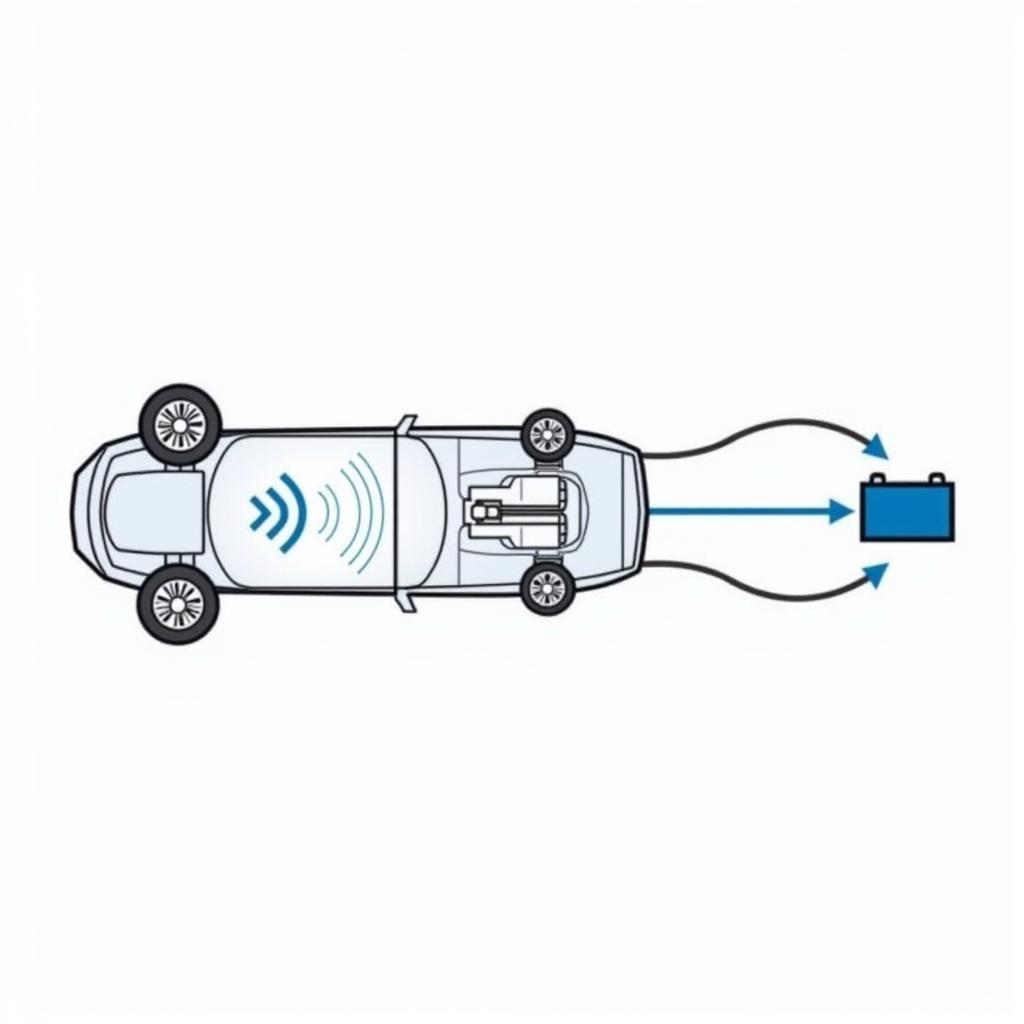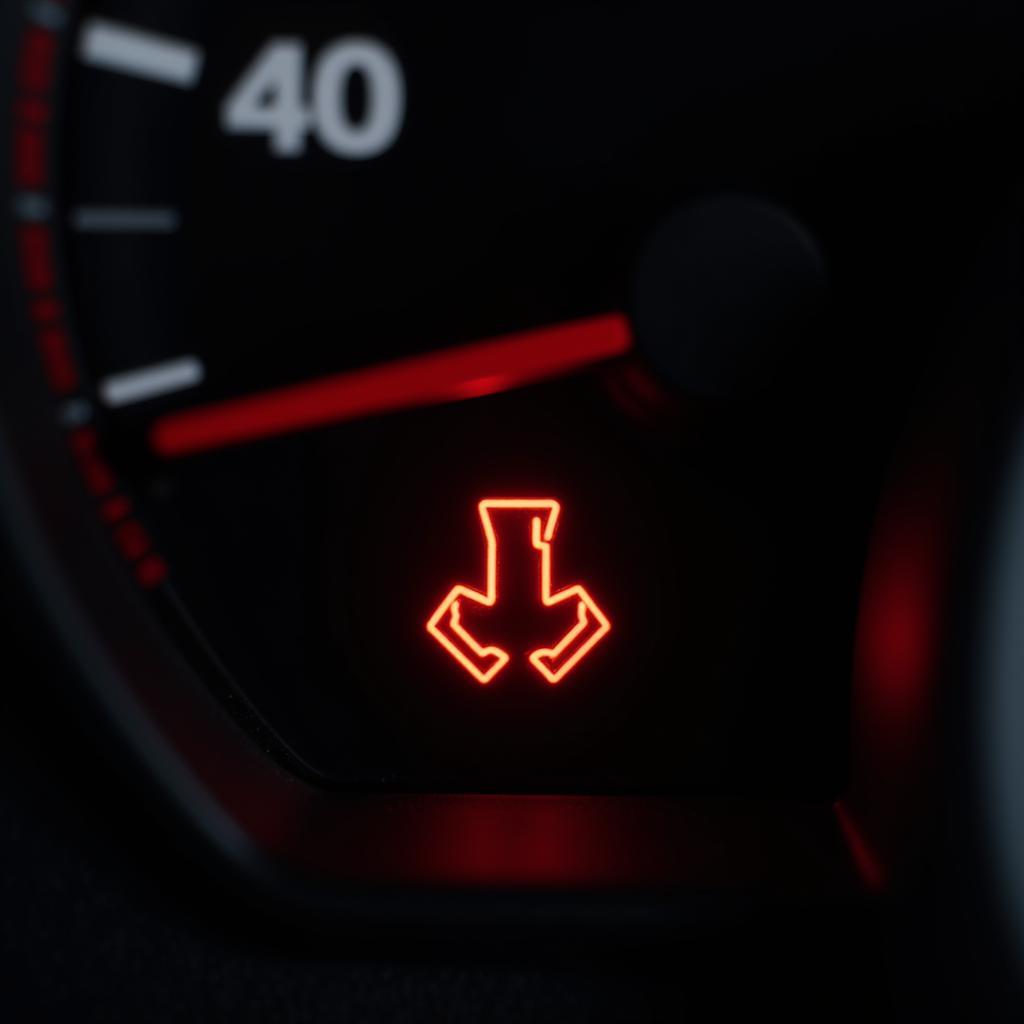The regenerative braking system is a crucial component of hybrid and electric vehicles, converting kinetic energy during braking into electrical energy to recharge the battery. While generally reliable, issues can arise, often indicated by the dreaded regenerative brake warning light. This comprehensive guide will delve into the common causes of this warning light, provide troubleshooting tips, and outline potential solutions.
Understanding Your Regenerative Braking System
Before we dive into the warning light, let’s briefly understand how regenerative braking works. In a nutshell, when you apply the brakes in a hybrid or electric vehicle, the electric motor switches roles, acting as a generator. This generator converts the vehicle’s kinetic energy into electricity, which is then used to recharge the high-voltage battery. This clever system improves energy efficiency and extends your vehicle’s range.
 Regenerative Braking System Diagram
Regenerative Braking System Diagram
Why is My Regenerative Brake Warning Light On?
The regenerative brake warning light illuminates when your car’s computer detects an issue within the regenerative braking system. This could signal a range of problems, from minor glitches to more serious malfunctions. Here are some of the most common culprits:
1. Battery Issues
Low Battery Charge: One of the most frequent reasons for the warning light is a low battery charge. The regenerative braking system needs a certain level of charge in the battery to operate effectively. If the battery is too low, the system may be disabled to protect it from damage.
Battery Health: As hybrid and electric vehicle batteries age, their capacity to hold a charge diminishes. A degraded battery might not be able to accept the charge from regenerative braking, triggering the warning light.
2. Brake System Problems
Worn Brake Pads: While regenerative braking handles a significant portion of braking force, traditional friction brakes are still necessary, especially at lower speeds. Worn brake pads can affect the overall braking performance, potentially triggering the warning light.
Brake Fluid Leak: A leak in your brake lines can also disrupt the braking system, including regenerative braking.
Brake Sensor Malfunction: Your vehicle uses sensors to monitor the braking system. If a sensor malfunctions and sends incorrect signals, it could lead to the warning light illuminating.
3. Issues with the Regenerative Braking System
Faulty Electric Motor/Generator: The electric motor plays a dual role in regenerative braking, acting as both a motor for propulsion and a generator for energy recovery. A problem with the motor, such as worn brushes or a damaged winding, can hinder regenerative braking.
Control Module Malfunction: The regenerative braking system is overseen by a dedicated control module. A malfunctioning module can disrupt the system’s operation, leading to the warning light.
What to Do When Your Regenerative Brake Warning Light Comes On
Seeing any warning light on your dashboard can be unsettling. Here’s a step-by-step guide to help you troubleshoot the regenerative brake warning light:
-
Consult Your Owner’s Manual: Your vehicle’s owner’s manual is an invaluable resource that provides specific information about your car’s warning lights and recommended actions.
-
Check Your Battery Charge: If you suspect a low battery charge, plug in your hybrid or electric vehicle to recharge.
-
Inspect Your Brake Fluid: Check your brake fluid level and look for any signs of leaks. If the fluid level is low or you notice leaks, consult a qualified mechanic immediately.
-
Schedule a Professional Diagnosis: If the warning light persists after checking the battery and brake fluid, it’s essential to have your vehicle inspected by a qualified mechanic specializing in hybrid or electric vehicles. They have the diagnostic tools and expertise to pinpoint the root cause.
Remote Software Solutions for Regenerative Brake Issues
In some instances, the regenerative brake warning light might be triggered by a software glitch rather than a hardware failure. Here’s where remote software solutions come into play:
-
Remote Diagnostics: Advanced remote diagnostics allow technicians to connect to your vehicle’s computer system wirelessly, scan for fault codes, and assess the health of the regenerative braking system.
-
Software Updates and Reprogramming: Manufacturers regularly release software updates for hybrid and electric vehicles. These updates often address bugs, optimize performance, and might even resolve underlying issues within the regenerative braking system. Remote software solutions allow for convenient over-the-air updates without visiting a dealership.
Preventing Future Regenerative Brake Issues
While some issues are unavoidable, you can minimize the risk of encountering regenerative brake problems by following these preventive measures:
-
Regular Maintenance: Adhering to your vehicle’s recommended maintenance schedule, including brake inspections and fluid flushes, is crucial.
-
Battery Care: Avoid completely depleting your hybrid or electric vehicle’s battery. Regularly charging it within the recommended range can help prolong its lifespan.
-
Address Warning Lights Promptly: Ignoring warning lights can exacerbate underlying problems. Address any illuminated warning lights promptly to prevent further damage and costly repairs.
Conclusion
The regenerative brake warning light serves as an early warning system, alerting you to potential issues within your hybrid or electric vehicle’s braking system. Understanding the common causes, following troubleshooting tips, and seeking timely professional assistance can help keep your vehicle running smoothly and efficiently. Remember, regular maintenance and proactive care are key to enjoying the many benefits of regenerative braking technology.
FAQs
Q1: Can I still drive my car if the regenerative brake warning light is on?
A: While you might be able to drive for a short distance, it’s not recommended. The warning light indicates a potential problem with your braking system, which could compromise your safety. It’s best to pull over safely and consult your owner’s manual or a qualified mechanic.
Q2: How much does it cost to fix a regenerative brake system?
A: The cost of repairs can vary significantly depending on the root cause and the make and model of your vehicle. Minor issues, such as a faulty sensor, might be relatively inexpensive to fix. However, major repairs, such as replacing the electric motor/generator or the battery, can be quite costly.
Q3: Are regenerative brake systems reliable?
A: Yes, regenerative braking systems are generally reliable, especially in newer hybrid and electric vehicles. Like any complex automotive system, they can experience issues over time. Regular maintenance and prompt attention to warning lights can help ensure their reliability.

